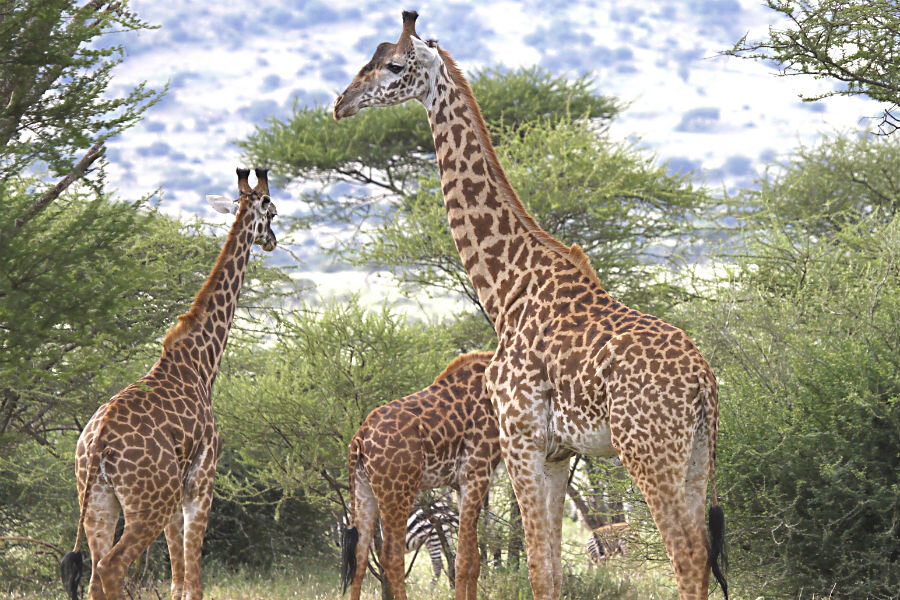Giraffes: Why the long neck? Scientists crack evolutionary code
Loading...
How did the giraffe get such a long neck?
Since early evolution theory, and likely well before, scientists have puzzled over how the spotted creature came to have a neck that stretches more than 6 feet long. The answer, according to a study published Tuesday in Nature Communications, may have to do with a small number of genes that have evolved in the past 11 million to 12 million years, as today's tallest land mammals split off from their closest relatives.
And not just in their necks. The study, a team effort led by scientists from Pennsylvania State University and the Nelson Mandela Institute of Science and Technology in Tanzania, suggests that the long necks and legs evolved in parallel through changes in 70 genes, many of which code for proteins.
But perhaps an even more important take-away from the four-year study is highlighting the need for giraffe conservation: The giraffe population has fallen 40 percent in just 15 years, making them more endangered than elephants. Whereas threats to elephants come from an international demand for ivory, giraffes are at risk because of local communities' market for "bush meat."
"Given the fact that giraffes are interesting to people intuitively we are hoping that [the publication of the genome] will draw attention to the conservation," says co-author Douglas Cavener. "Any information we have from the sequence can also help further delineate the difference to some species of giraffes and some of those are clearly endangered, so there could be some help in conservation."
The scientists sequenced genomes of two Masai giraffe (Giraffa camelopardalis tippelskirchi) from the Masai Mara Game Reserve in Kenya and the Nashville Zoo, and one fetal okapi (Okapia johnstoni), from the White Oak Conservatory in Florida. The okapi, giraffe's most closely related species, shares 19.4 percent of its identical proteins, but not its famously long neck.
The genes responsible for giraffes' long limbs are actually universal. In giraffes, however, they've been modified over some 15 million to 29 million years, Dr. Cavener tells The Christian Science Monitor in a telephone interview.
"The genes that we identified as likely determining giraffes' unique characteristics are, in fact, genes that were first discovered in other animals to be responsible for making key regulatory decisions about the body plan and function," Mr. Cavener says.
So what happened?
The giraffe and the okapi's common ancestor had an intermediate neck length, implying that when they split off about 11.5 millions years ago, the okapi evolved to have shorter necks, Dr. Cavener tells the Monitor. As they evolved separately, the giraffe's key regulatory proteins genes underwent several modifications, promoting extended growth in the cervical vertebrae and the cardiovascular system, allowing the giraffe's heart to pump blood all the way up to its head.
Making that six-and-a-half foot journey upward has "evolved a turbocharged heart" and a vascular system adapted to handle twice the blood pressure as in other animals, the researchers write.
But it is modification, not a question of "new genes," responsible for the evolution of the giraffe's neck, Cavener tells the Monitor. "The message is that novelty is not created from scratch, but rather from building on solutions that have evolved over time. The giraffe's long neck and legs are kind of a good example."






